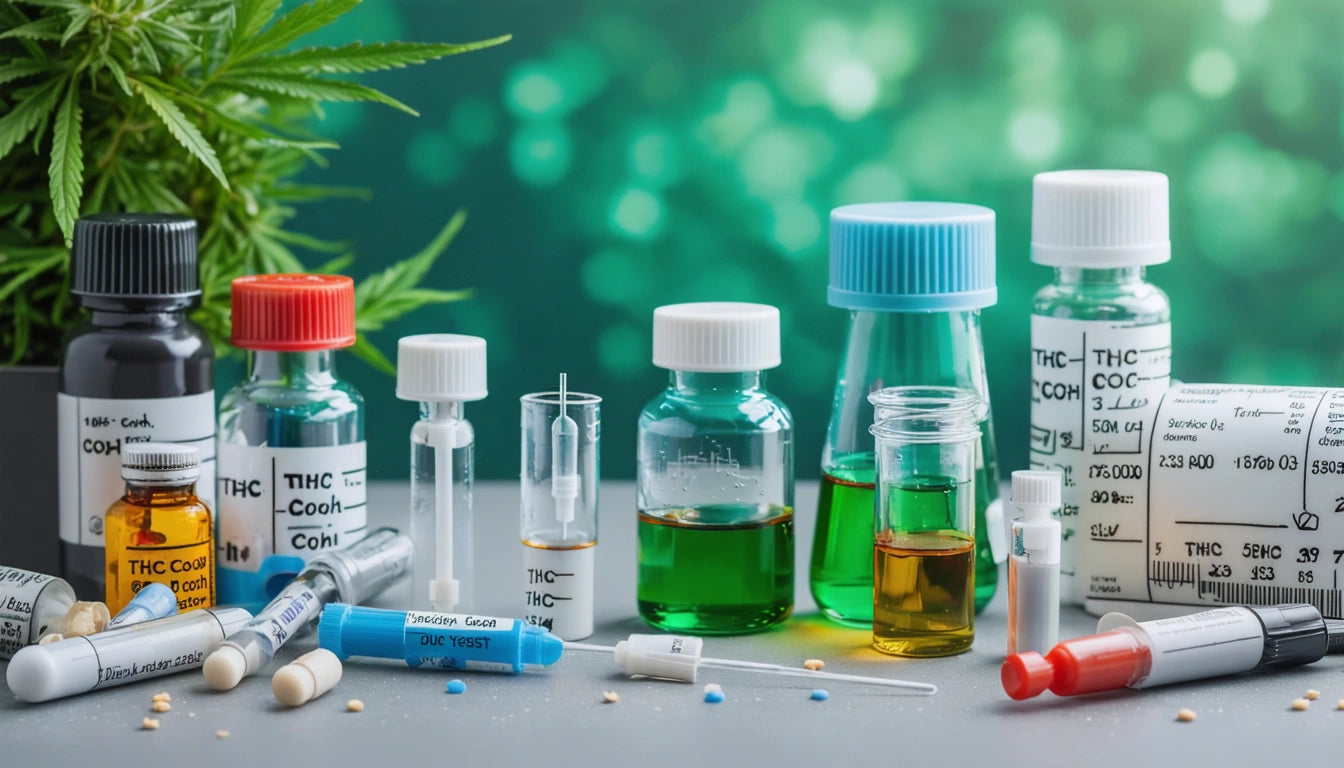Table of Contents
Understanding THC-COOH: Its Role and Significance in Drug Testing
When it comes to cannabis drug testing, understanding what THC-COOH is on a drug test is crucial for both consumers and industry professionals. THC-COOH (11-nor-9-carboxy-THC) is the primary metabolite that most standard drug tests screen for, not the psychoactive THC itself. This distinction has significant implications for how long cannabis can be detected in your system and what a positive test actually indicates.
What is THC-COOH: The Cannabis Metabolite Explained
THC-COOH is a non-psychoactive metabolite formed when your liver processes delta-9-THC, the main psychoactive compound in cannabis. After consumption, your body converts THC into several metabolites, with THC-COOH being the most significant for testing purposes. Unlike active THC, THC-COOH does not produce any intoxicating effects but remains in your system much longer.
According to research on THC and Carboxy-THC, this metabolite can be detected in urine for days or even weeks after the psychoactive effects have completely subsided.
THC vs. THC-COOH: Key Differences and Conversion Process
The distinction between THC and THC-COOH is critical to understanding drug test results:
- Delta-9-THC: The primary psychoactive compound that creates the "high" sensation
- 11-OH-THC: An intermediate metabolite that is also psychoactive
- THC-COOH: The final, non-psychoactive metabolite that accumulates in fat cells
When cannabis is consumed, delta-9-THC enters the bloodstream and quickly reaches the brain. The liver then metabolizes it into 11-OH-THC before finally converting it to THC-COOH. This process is detailed in this comprehensive breakdown of how THC is processed by the human body.
Detection Windows: How Long THC-COOH Remains in Your System
THC-COOH has a much longer detection window than active THC. While the psychoactive effects of cannabis typically last 2-3 hours, THC-COOH can be detected for:
- Urine: 3-30 days (depending on frequency of use)
- Blood: Up to 7 days
- Hair: Up to 90 days
- Saliva: 1-3 days
For regular consumers, THC-COOH can accumulate in fat cells and be released slowly over time, extending the detection window significantly. This is particularly relevant for those who use properly sealed cannabis products with child-resistant packaging for medical purposes, as they may maintain detectable levels despite not being impaired.
Testing Methods That Detect THC-COOH
Most standard drug tests specifically look for THC-COOH rather than active THC. The most common testing methods include:
Immunoassay Screening
Initial screenings typically use immunoassay tests that detect THC-COOH at certain cutoff levels (typically 50 ng/mL). These tests are quick but can sometimes produce false positives.
Gas Chromatography/Mass Spectrometry (GC/MS)
Confirmation tests use GC/MS to specifically identify THC-COOH at lower cutoff levels (typically 15 ng/mL), providing more accurate results.
Understanding these testing methodologies is covered in this guide to THC and drug testing, which explains the science behind detection methods.
Factors Affecting THC-COOH Levels in Drug Tests
Several factors influence how long THC-COOH remains detectable:
- Frequency of use: Regular users accumulate more THC-COOH in fat cells
- Metabolism rate: Faster metabolisms may clear THC-COOH more quickly
- Body fat percentage: Higher body fat can store more THC-COOH
- Hydration level: Well-hydrated individuals may have more diluted urine samples
- THC potency: Higher THC content leads to more THC-COOH production
These variables make it difficult to predict exactly how long THC-COOH will remain detectable for any individual. This analysis of high THC levels explains how potency affects metabolism and detection windows.
Practical Implications for Cannabis Consumers
The presence of THC-COOH on a drug test has several important implications:
First, a positive test does not necessarily indicate recent use or impairment. Since THC-COOH can remain in your system long after the effects have worn off, drug tests cannot reliably determine when cannabis was last consumed or if someone is currently impaired.
Second, for medical cannabis patients, this presents a particular challenge. Despite using cannabis legally and responsibly, patients may test positive for THC-COOH weeks after their last dose, potentially affecting employment or legal situations.
Finally, understanding what THC-COOH is helps consumers make informed decisions about cannabis use in relation to potential testing situations. As detailed in this guide to THC terminology, knowing the difference between active compounds and their metabolites is essential for navigating today's complex cannabis landscape.
For those subject to drug testing, this knowledge allows for more informed decisions about timing and frequency of cannabis consumption, helping to balance therapeutic benefits with practical considerations.











Leave a comment
All comments are moderated before being published.
This site is protected by hCaptcha and the hCaptcha Privacy Policy and Terms of Service apply.